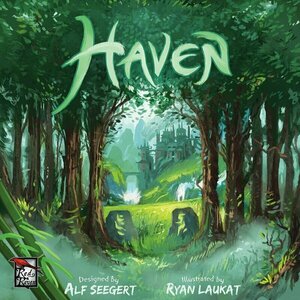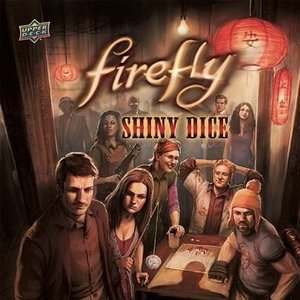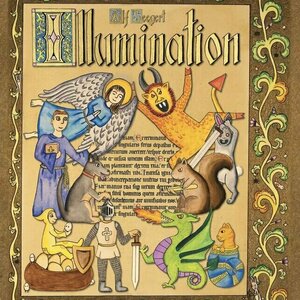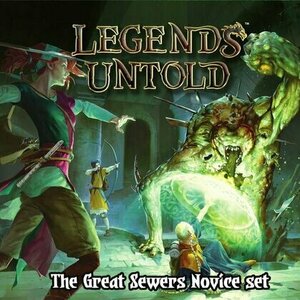
Legends Untold: The Great Sewers Novice Set
Tabletop Game
Legends Untold is a co-operative card based adventure game for 1-8 players(4 players in the basic...
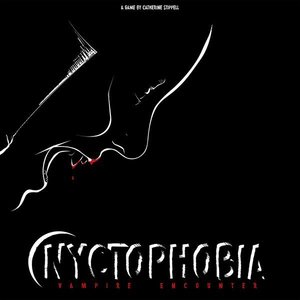
Nyctophobia: Vampire Encounter
Tabletop Game
The night is cold and dark. It's hard to see where you are or where you've been. "A road trip gone...

Kids Trains! Baby Games for One & Two Year Olds
Education and Games
App
NEW! Fun pirate train game. Chug and toot into some true train fun and have a toot-riffic time...

Colt Express
Games
App
The game officially transposed from Colt Express, the famous train robbery boardgame. Plot your...
BoardgameApp

Mourinho Tactical Board Pro
Sports and Utilities
App
Work your ideas with your technical staff and players Now you can have your data in several devices...
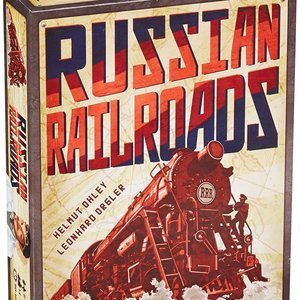
Russian Railroads
Tabletop Game
Each player has their own board, with space for factories, and 3 rail tracks (to 3 different...
Purple Phoenix Games (2266 KP) rated Firefly: Shiny Dice in Tabletop Games
Jun 12, 2019
I really like Firefly. So when Travis told me he had Firefly: Shiny Dice, and was looking to get rid of it, I jumped on the chance to get my hands on something Firefly! I’d never played the game and had never even heard of it either. Having played it now, though, I can see why Travis wanted to off-load it on someone else.
In Firefly: Shiny Dice, over the course of three rounds, players are rolling dice to assemble a crew, complete missions, and defeat bad guys. All of the main characters of the show are represented by different die faces, each with a special power. Use those powers to help defeat bad guys and earn VPs on your turn each round! The player at the end of the game with the most points is the winner. Firefly: Shiny Dice is played the same way, regardless of player count – in solo play, you are still trying to amass the most points possible over three rounds.
At it’s core, Firefly: Shiny Dice is a dice-rolling game. And that’s where the simplicity ends. This game is bogged down an ambiguously confusing rulebook, complicated turn steps, and just way too much text overall. When I first got this game, I was psyched to play. I sat down, opened up the rulebook, read through it at least 3 times, and then put the game away. I was so confused by what I had read, I couldn’t even bring myself to try it at first. There is a lot of ambiguity in the rulebook that caused a lot of confusion and frustration for me. For example, the brown dice are Outlaw characters and the white dice are Passenger characters, but the rulebook and player aids use “Crew Dice” most of the time – so are they all Crew Dice, or just the Outlaws since, in the show, those are the characters who actually are the crew on Serenity? Are Passengers considered Crew? The same ambiguity goes for Mission Cards – if you draw one that you cannot complete, is it just discarded? Then what’s the point of the Mission Card? How about if you draw one and don’t want to complete it? Are you required to complete it if you can? Or can you choose to ignore it to negate the Mission Keyword? I felt like after I read the rulebook, I actually had more questions than before I started.
Regarding turn order, there is just way too much going on for me. There are 4 steps each turn, and some steps have several ‘phases.’ First you roll your dice, and then depending on what you rolled maybe you can re-roll some, and then you have to check to see if you got any bonuses/penalties after your re-roll, but then you stop and draw a Mission Card and possibly resolve it (?), and now you go and deal 1 damage to a foe but only if the current Mission says ‘Shiny,’ and then the foe dice resolve their effects, and now you can use your dice and character powers to fight the foes, and then depending on how many dice you have left/the Mission Keyword from your card this turn, you can decide to push your luck and take another turn immediately or just end your turn now. Whew. There are just way too many unnecessary steps, in my opinion. All you should need to do is to roll/re-roll your dice, resolve foe effects, and fight the foes. The Missions and die bonuses/penalties feel extraneous to me, and result in clunky gameplay.
In theory, this should be a cool game. In reality, it’s just frustrating. To me it feels like every single small idea made it into the end-game, but they were not executed well enough to justify including them. This game is way too wordy and ambiguous to make sense, and even though I keep the rulebook on hand every time I play, I feel like it doesn’t really help me at all. I think a more pared down/edited version of this game could be a hit.
As a fan of Firefly, I want to like this game. I really do. But I don’t. I think it is too complicated and far too confusing for what it is supposed to be, which is a relatively light dice-rolling game. Firefly: Shiny Dice is not on my short-list of games to play, nor is it on my long-list (is that a thing?). It’s kind of just in my collection at this point, though I don’t know if it’ll stay here for long.
https://purplephoenixgames.wordpress.com/2019/01/28/solo-chronicles-firefly-shiny-dice/
Purple Phoenix Games (2266 KP) rated Hunters of the Lost Creatures in Tabletop Games
May 8, 2022
Hunters of the Lost Creatures is a silly set collection card game for three to four players. In it, players assume the roles of zoological park curators charged with collecting unique creatures for their parks. They do this by bidding on and drafting creature cards, playing take-that style cards on their opponents, and blocking their cards from being manipulated by others.
DISCLAIMER: We were provided a prototype copy of this game for the purposes of this review. These are preview copy components, and I do not know for sure if the final components will be any different from these shown. Also, it is not my intention to detail every rule in the game, as there are just too many. You are invited to download the rulebook, back the game through the Kickstarter campaign, or through any retailers stocking it after fulfillment. -T
To setup, players choose one hunter card from each of the four hunting zones: Sea, Forest, Plains, and Air, as well as three “Park Closed” cards. The creature cards are to be split by zone and shuffled, with one special card (Turnado and Cat-a-Pult) added. These shuffled decks are then placed on the table and the top card revealed from each deck. Players decide turn order and the game may begin!
Hands are mostly played simultaneously, with players choosing either a hunter or special card from their hand and placing it face-down in front of themselves. All cards are revealed simultaneously and the card effects are applied. If a player has revealed a hunter, and no other players have the same-colored background/terrain type, that player receives the matching card from those on offer and places it in their park (tableau), or ANY OTHER PLAYER’S park. If ALL players have chosen the same terrain type hunters, the card on offer is removed from the game entirely. However, if not all hunters match, but at least one matches, the matching hunters’ players receive no cards.
Should a player choose to play a special card, their effects are triggered once per game. These include Turnado (switch any two creatures in any two parks), Cat-a-Pult (discards any creature from any player’s park), Thieves (steal any one terrain-matching creature and places it in the Thieves player’s park) and Closed Park (protects the player from the effects of aforementioned special cards). Again, these special cards may only be played once per game, so special consideration is needed as part of their strategy.
The game continues in this fashion of players throwing cards, messing with each other using special cards, and protecting themselves from said special cards until only one stack of creature cards remains. The game ends and points are tallied per the scoring table in the rulebook. The winner is promoted to Head Creature Park Guy and is carried around by the other players. Okay, that’s not at all true. They just win the game.
Components. Again, this is a prototype copy of Hunters of the Lost Creatures, so all components shown here are subject to change at any time. That said, I received a huge deck of cards in a cute black cloth bag. The cards are all decent quality, and not super glossy, which I appreciate. The art on these cards are all whimsical and silly, which match the silly and punny titles for each. Some of these punny titles can be seen in our photos, with my favorites being the Dandylion (a well-“dressed” weed with a cane and lion face) and the Cougar (which is subtle, but portrays an adult apex big cat with a smaller and younger cat hanging on it). If you enjoy these somewhat intellectual, and sometimes visual, puns you will enjoy these cards.
What I have found in playing through this several times is that it is best when all players are taught the game backwards…ly. I mean to say that players need to know the premise, but most importantly, the scoring system before even the setup. Points are scored for having a run of 1-2-3, a straight of 0-1-2-3-10, at least one card from each terrain type, and for the printed value on the cards. It is more than simply collecting all the favorite cards or even highest value 10 cards. So there is strategy in collecting the best assortment of creatures for scoring purposes, which is great because otherwise this game is not really a game at all.
As players play their hunters to draft creatures, I have found that many players choose to chase the same cards over and over. It becomes obvious that most players will be vying for the value 10 cards, so the players who figure this out and grab the second best card is usually happier with the hand. Of course, more strategy is employed once the special cards are played, as they each mess with opponents in different ways. So even though I may not have acquired that 10 of Forest, I might grab the Turnado and switch out a value 0 or -10 card for that sparkling value 10. Wait, negative 10? Yep. Sometimes life just smacks you around and you get stuck with a -10 card to really punish your great play. Not that it ever happened to me, and not that I would be bitter about it.
The real game hinges on the usage of the special cards. When do you play them? Whom do you target? Turnabout is fair play, after all, and no alliances can be formed whilst playing Hunters of the Lost Creatures. Now, it is hinted at in the rulebook that preview copies ship with entry-level rules, which mean (to me) that more advanced rules may be coming in the final game, or at least some variants to spice up the gameplay. If true, then this game becomes much more interesting to me. Don’t get me wrong. I have enjoyed almost all of my plays, but be warned that playing with spiteful gamers may end poorly for a fun-filled game night.
All in all, I am excited to see how the campaign for Hunters of the Lost Creatures fares, as I believe many gamers and non-gamers alike will enjoy it. I would be super jazzed to grab a final copy if it does in fact ship with alternate or advanced rules, or if the creatures of the same value had unique names and art. That would really satisfy. Keep the bag or go traditional cardboard box, it matters not to me. Just beef up the card quality, add even more uniqueness and fanciful art and you’ve got a fan in me. Grab your copy during the Kickstarter campaign launching May 10, 2022!
Purple Phoenix Games (2266 KP) rated Illumination in Tabletop Games
Oct 5, 2021
Illumination is a game about two monks who are tasked with illuminating the pages of manuscripts with drawings in the hopes of becoming the next head of the Scriptorium: The Scriptmaster, one might say. However, one of the monks gets a little itch and begins to draw irreverent subjects, like demons, dragons, and such. Which monk will earn the made-up-by-me title of Scriptmaster? Guess you will have to play to find out.
DISCLAIMER: We were provided a copy of this game for the purposes of this review. This is a retail copy of the game, so what you see in these photos is exactly what would be received in your box. I do not intend to cover every single rule included in the rulebook, but will describe the overall game flow and major rule set so that our readers may get a sense of how the game plays. For more in depth rules, you may purchase a copy online or from your FLGS. -T
As with many games that are well endowed with components, setup can be a bit of a task. The game will be focused around a few main areas. First, the three manuscript pages are placed on the table in any orientation, with the purple wild Drollery tiles placed on one text box on each page. The Monastery mat is placed nearby as well, with the Abbot pawn randomly placed on a blank station. This pawn will be moved around the map during play to determine which rituals may be performed at any one time. Each player will have their own player mat, upon which will be placed their starting gold (1 for the Reverent player and 5 for the Irreverent player), as well as their starting nine Illumination tiles. The rules mention separating all the Illumination tiles into stacks of three, choosing three of these stacks to flip over and place on the play mat without altering the order. This is very important to keep the tiles in their randomized order. The remainder of the tiles are to be placed nearby in stacks of three. Each player is dealt one starting Scriptorium card and a random Crusade card that will offer bonuses at the end of the game. Once all setup, the game may begin with the Reverent player’s turn.
On a turn, the active player will choose from their mat one row or column of three tiles to be played. They take the three tiles and place them upon one of the three book pages on the table, in the margins. From there the player can choose any tile from the margin to place onto the page in any order they wish, upon any quill icon they choose (except for coin tiles – those simply grant two coins immediately). If the tile is placed on a quill of a matching color to that of the tile, the player will immediately collect one coin and place it on the player mat. If the tile is placed on a quill and orthogonally touches a tile of the matching color, the player then collects a Ritual token of the same color. These Ritual tokens are used in sets of three, four, or five in order to earn VP for end of game scoring. Each purple Drollery tile is wild for the purpose of placement and Ritual token collection. Each tile placed will collect its earnings immediately, and any coins earned may be spent immediately as well.
A player may use coins for several purposes throughout the game: move a tile from the margin of one book to the margin of a different book, move the Abbot one space along the track for Ritual purposes, or to draw a Scriptorium card. The other resources are Ritual tokens, and may be spent during the turn as well. In order to spend these, the Abbot must be on the matching location on the Monastery board, and the player may spend three, four, or five matching tokens to perform the Ritual. They discard the tokens, place one of their cubes upon the appropriate icon on the Monastery mat for VP at game end.
At any time during the turn Scriptorium cards may be played. These are very special cards that allow the player to complete certain actions that break the normal rules. This could be a free movement of the Abbot, or switching places of two tiles on the player mat, or even banishing one of the opponent’s tiles to another book entirely.
Why mention the battles in the intro if they are not part of the game? They are. Once opposing foes are placed orthogonally from each other, and all involved tiles are completely enclosed by other tiles or board obstacles, a Bounded Battle will begin. Battles are simple to resolve as it requires players to count the number of combatants on both sides and whichever side has more forces wins the battle. The winner places their cube on the appropriate battle card near the Monastery mat, and the loser gains coins equal to the number of their tiles lost to battle. Tiles that are lost are simply flipped to its opposite side.
Play continues in this fashion of players choosing and placing tiles, drawing and using Scriptorium cards, performing Rituals, and resolving Bounded Battles until both players pass their turn. The game is then over and VP counted in all their places around the play area. The player with the most points becomes the next Scriptmaster Flex and is able to enhance or defile as many manuscripts as they like!
Components. This game has a lot of components, but they are mostly cardboard tiles, cardstock cards and mats, and wooden cubes. The quality is all very fine, as to be expected with Eagle-Gryphon games. The art, for me, is the biggest drawback of the game. I UNDERSTAND why it looks the way it does – in trying to stick with a Medieval manuscript theme some decision were made on the style. It just doesn’t vibe with me. I took a look at the new edition of The Road to Canterbury, by the same designer and publisher, and loved the look of it. I REALIZE that the tiles are supposed to be not only reminiscent of the art style of that time period, but also imaginations of monks and their doodles, but it’s just not for me. I do like the looks of everything else except the art on the tiles, and when that’s the majority of the components I am looking at, I sigh a little. I am absolutely no artist, and I can acknowledge that the art presented is very good and in line with the theme. Oh well.
The game play is very solid, and I do like it quite a bit. Everything makes a lot of sense as to why you are doing the actions, and the most difficult thing to comprehend the first time through is the Bounded Battles. You see, battles don’t immediately happen when you pit one foe against another. In fact, all tiles engaged need to be surrounded by other tiles or battleground obstacles before battle can begin. This allows both sides to add more tiles to help sway the balance of power, and can get a little confusing for some players. Not ME, of course, but SOME players (ok it was totally me the first time through). I am thankful that resolving the battles are pretty simple, and winning battles gives the victor a cool five points.
Other aspects I really enjoy are the Scriptorium cards and the Rituals. Again, the Scriptorium cards can be drawn for two coins during the game and can provide excellent rule-breaking choices to the players. Any time a game has cards that bend the rules, I generally am a fan. The Rituals are merely tokens that are collected and then turned in for points. This doesn’t necessarily sound that interesting until I reveal that a player board only has space for seven items: Ritual tokens AND coins included. So a player may be stacking up coins, and not have space for Ritual tokens or vice versa. Hard choices need to be made sometimes, but to help with that Ritual tokens can also be used like a coin, but not the other way around. So there is no buying Ritual tokens. Having that restriction of seven items on hand is a really nice touch, and makes each turn important.
So all in all I enjoyed my plays of Illumination. I have yet to try the solo version that is included, but I will soon. I feel that of the two Medieval series games I have played I prefer The Road to Canterbury, but I do like the different feel of Illumination. Having a solo mode is also very attractive to me because my wife and I do not always have matching schedules where we can game together. I like Illumination for the actual gameplay, but the art is a turn-off for me. Purple Phoenix Games gives this one an irreverent 4 / 6. If you are looking for something a little different that features some interesting game play, tons of choices, yet is restrictive as well, take a look at Illumination. Try not to complete too many wine and candle rituals though. Those two things don’t mix very well in my experience.
